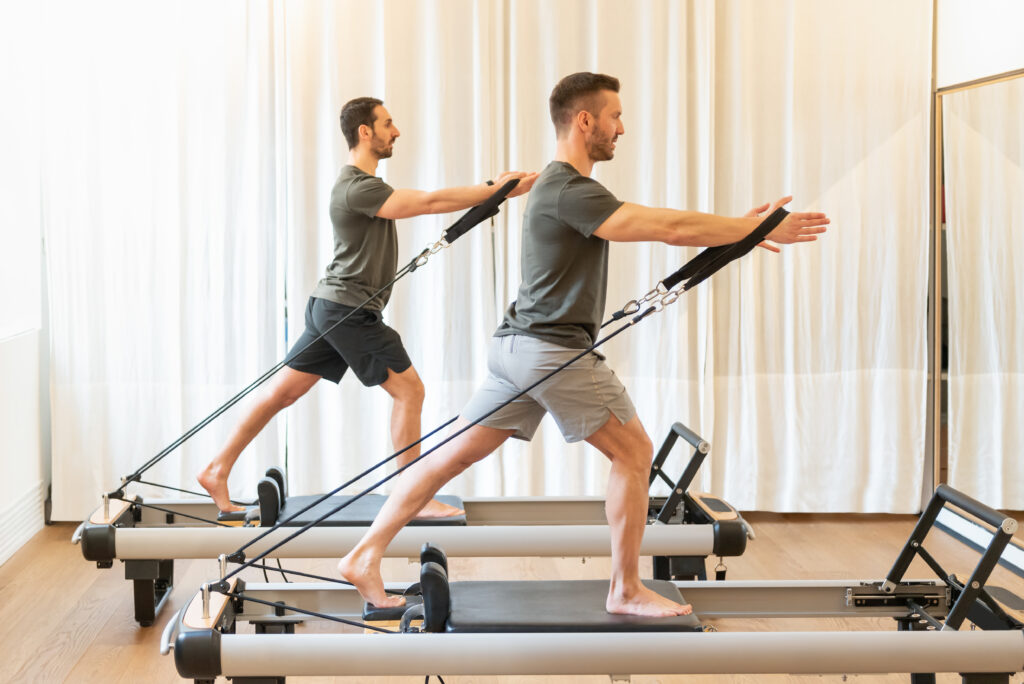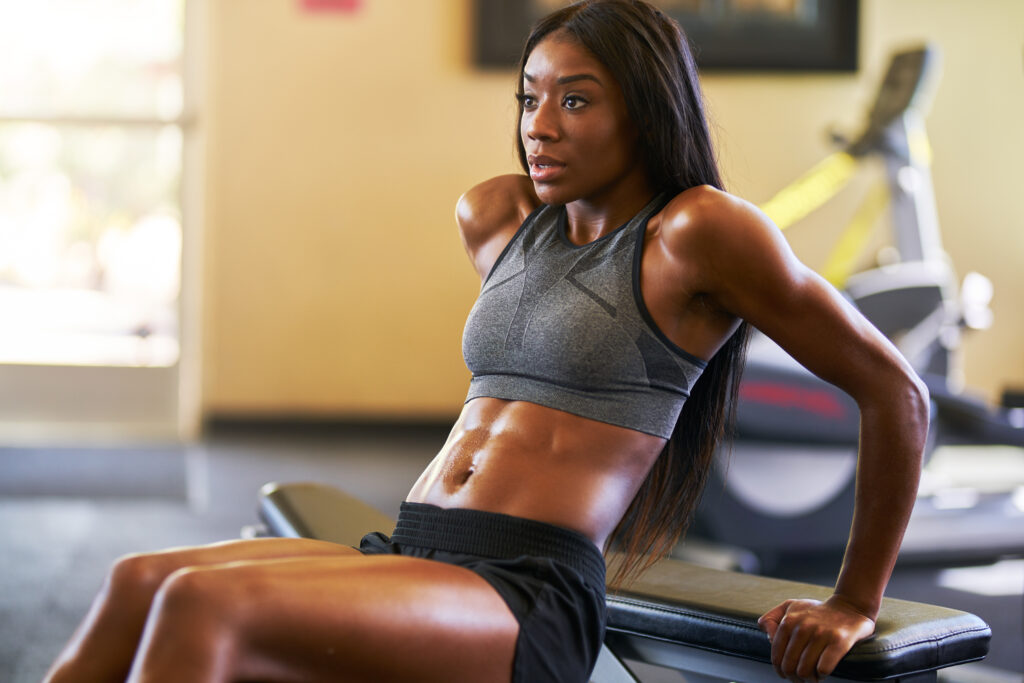No products in the cart.: R0.00

When embarking on a fitness journey one of the most common things people wonder is HOW LONG IT TAKES TO SEE RESULTS from exercising. While the endorphin rush and mood boost are huge almost-instant benefits, we get it – a big source of motivation for many people comes from seeing their fitness, strength, or body composition changing. Knowing a rough timeline for goals like this can help you stay the course and avoid feeling discouraged. You might notice some positive changes after your very first workout, some might take a few weeks, and others might take months. Good things take time, so hang in there and remember why this is important to you. We’re in this for the long game, not only a good time! Lol
Ps. This is a tough question to give a definitive answer to, as fitness looks and feels different for everyone and ability, goals and motivation will differ from person to person.
The time it takes to achieve your goals and see the results you want may vary depending on factors like your base fitness level, any health issues or previous injuries, how frequently you work out, what training style you follow, how much you challenge yourself and what resources you have available (such as time and equipment). All bodies and journeys are beautifully unique!

Because of these variables, this timeline is a general guide, rather than a one-size-fits-all approach to tracking your progress. Stay committed and consistent – that’s where the magic happens.
1-4 weeks
Ok, When you start exercising, the changes you’re likely to notice first are often related to your mood, energy, sleep and confidence.
During a workout or just after, it’s common to feel an uplift in your mood from the rush of endorphins and feel-good chemicals, and this energy can have a positive impact on how you feel for the rest of the day. Challenging your body and mind in a great Afro Yoga / Pilates session can also leave you feeling more empowered, confident, accomplished and less stressed.
One 2017 review on the effects of a single bout of exercise on mood, cognition and neurochemical pathways showed that the three most consistent effects on cognition or behaviour are enhanced mood, decreased stress and improved cognitive functions. The American Psychological Association has also highlighted the ways exercise can improve brain function, mental health, stress and memory.

It’s not just structured workouts or a training program that will have you quickly reap the rewards of physical activity. Just 30 minutes of walking each day can do wonders for your fitness, strength and energy levels according to Australia’s Heart Foundation, with one study finding walking has a positive impact on your mood after just 10 minutes.
Want a better night’s sleep? Experts at Johns Hopkins Medicine say that 30 minutes of exercise each day can help you fall asleep more quickly and improve your sleep quality — and it doesn’t take long to notice the change. Just be mindful of when you schedule your workouts as exercising at night can keep some people awake! Oops.

5-12 weeks
Once you’ve been exercising consistently for a few weeks, you’ll likely notice that your cardiovascular fitness and VO2 max have improved, meaning you feel less out of breath during movement. That yoga / Pilates/session that may have felt tough in week one now feels much easier! If you want to see faster improvements in your cardio fitness, exercising regularly and increasing the intensity is key. A 2007 study on the effects of different doses of physical activity on the cardio fitness of sedentary or overweight women found a strong relationship between the amount of exercise and changes in fitness, meaning the more you move, the better!
Challenging yourself with training styles such as HIIT can also have a positive effect. A 2020 study on the effects of high vs. moderate-intensity interval training on resting heart rate, blood pressure and performance in older women found that HIIT promoted greater benefits for performance, function and body composition than moderate-intensity workouts.

Around this time, you may also start to notice improvements in your fitness abilities. This could be improvements in your muscular endurance, meaning it takes a longer period before your muscles feel tired, or increased muscular strength, meaning you can lift heavier weights. After weeks of practice, you might begin to see improvements in your mobility, coordination and ability to perform exercises with good form, or that your recovery time and muscle soreness (DOMS) between workouts have reduced. For some people, this period can be the toughest as the excitement of starting a new routine has worn off, but you don’t know if you’re making progress yet. Trust the process – you are!
3 months +
At this point, you’re hopefully in a good routine and exercise has become (or is starting to become) a natural healthy habit and part of your lifestyle you look forward to. Beyond the three-month mark, you’re likely to feel much more confident with your workouts (and more confident in the gym if that’s where you work out), and your muscle and strength gains will continue to improve from here on out!
This is also generally when you’ll start to notice any changes in your body composition if you’ve been doing regular cardio and strength training, along with adopting healthy eating habits. If building muscle or losing fat is a goal for you (and it isn’t for everyone), remember that it’s going to take time to see changes if you are approaching it in a healthy, sustainable way.

If you’re not seeing as much progress with your strength gains, make sure you’re completing regular resistance training and challenging yourself enough – that’s what forces your muscles to adapt and grow. Progressive overload is a great way to do this, where you gradually dial up the volume, intensity, density and frequency of your workouts.
Prioritise those crucial rest days and recovery sessions, too – your muscles repair and rebuild during your downtime, not your workout time. For muscle gains, nutrition is equally important, so make sure you’re eating enough protein each day, alongside plenty of other nourishing foods for energy and nutrients. Speaking of nourishing, this is where Seamoss flourishes, for both your pre and post-workout recovery!

Sea moss has garnered attention for its benefits. Many wonder, “How long does it take sea moss to work?” The answer, like many things in life, lies in patience. Sea moss is rich in iodine, a mineral that is deficient in many individuals. After incorporating sea moss into their diet, some experience improved energy levels and enhanced physical and mental well-being within a few days. However, it’s generally advised to give it three to six weeks for substantial and lasting changes. Just as the ocean tides ebb and flow, so does the process of change within our bodies.
SEAMOSS FOR POST-WORKOUT RECOVERY: Eating Seamoss and adding a Sea Moss-infused juice or smoothie to your post-workout routine might not only build muscles but make your body stronger. That’s thanks to it’s B vitamins, increasing energy and creating building blocks to enhance cell function!

We all want to feel like we’re making progress and moving in the right direction, but it’s important to remember some results take longer than others. Here at Khanatural we always recommend choosing your own style of exercise you enjoy simply because of how it makes you feel, rather than the results you hope to see. This will make your journey far more fun and all the other benefits will be added bonuses along the way!
Disclaimer: “This blog post is not intended to replace the advice of a medical professional. The above information should not be used to diagnose, treat, or prevent any disease or medical condition. Please consult your doctor before making any changes to your diet, sleep methods, daily activity, or fitness routine. Khanatural assumes no responsibility for any personal injury or damage sustained by any recommendations, opinions, or advice given in this article.”





